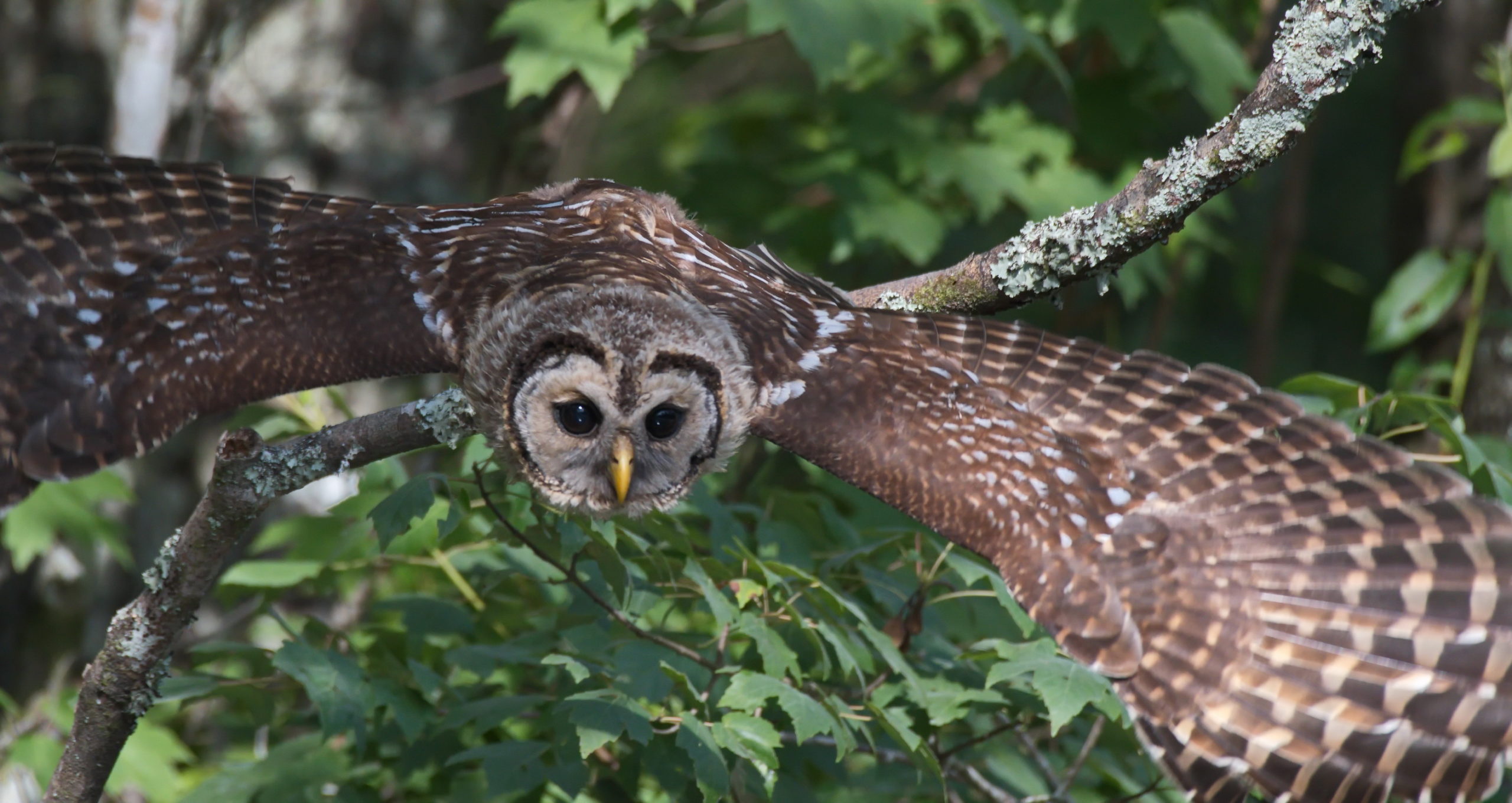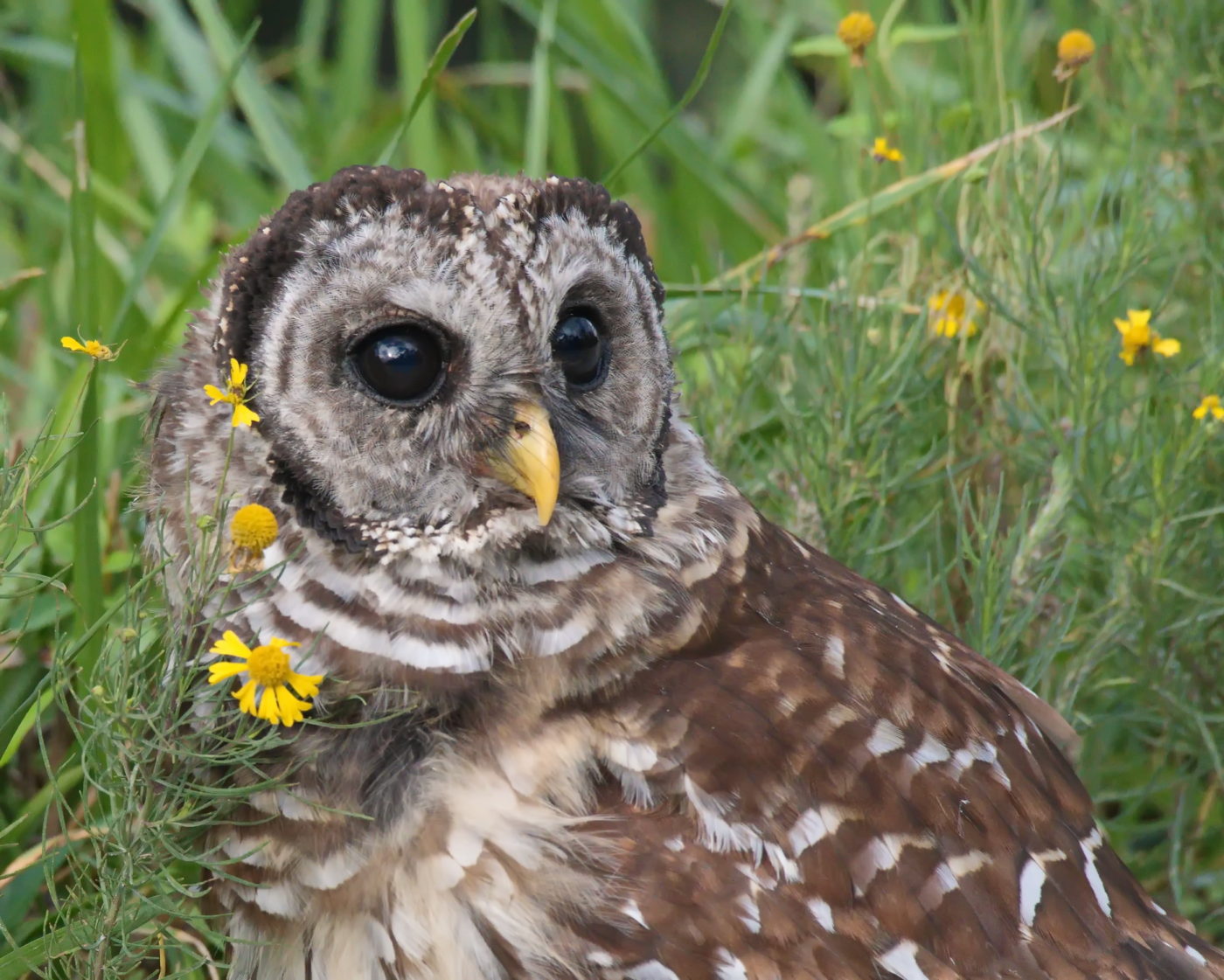Owlets
“I know I am standing at the edge of a mystery in which terror is naturally and abundantly part of life, part of even the most becalmed, intelligent, sunny life — as, for example, my own. The world where the owl is endlessly hungry and endlessly on the hunt is the world in which I live too. There is only one world.”
~ Mary Oliver
Oh, my neglected blog! The world has turned a bit upside down since my last post, hasn’t it? I was sent home from my “day job” as a psychology professor back in March with the expectation that we’d be back in two weeks when we had this pandemic under control. (Shall we laugh or cry to remember? We had no idea…) I had one week to convert three face-to-face classes into remote format. I had the summer to convert five classes into synchronous remote format while also teaching my usual online summer courses. Having now done all of that, I can confidently say that Zoom is the devil, but we make things work because what else is there to do? It has been a tremendous time and energy suck. I’ve only rarely been able to get outside with camera, and even when I could I didn’t have time to write afterward, but I think things are about to get easier. Easier doesn’t feel like quite the right word…but less difficult, at least. My fall classes are nearly over, and my spring schedule looks to be more manageable. I don’t expect to be back in front of a physical classroom before August 2021, which breaks my heart a little. Nevertheless, the universe is bigger than humanity and remains wondrous for anyone who cares to see.
In the summer I visited Alligator River National Wildlife Refuge in the hopes of photographing black bears. I did photograph black bears…more on that in a later post…but one of the keys to successful wildlife photography is to be open to the opportunities nature presents to you, whether they’re consistent with your expectations or not. At the beginning of my visit I never would have guessed how much time I would spend with baby owls.
Barred owls are my friends back home. I see them fairly regularly, and I’m always thrilled when I do, but in Maryland so far I’ve only seen adults. I was slowly prowling the roads at ARNWR keeping a careful eye out for bears and other wildlife when I saw a flurry of movement on the ground. As I approached I could see that it was a bird, and given its size I thought it had to be a raptor. Eventually, I could see that it was a barred owl, but it wasn’t until it settled down and looked up at me with a fuzzy face that I realized it was a BABY!
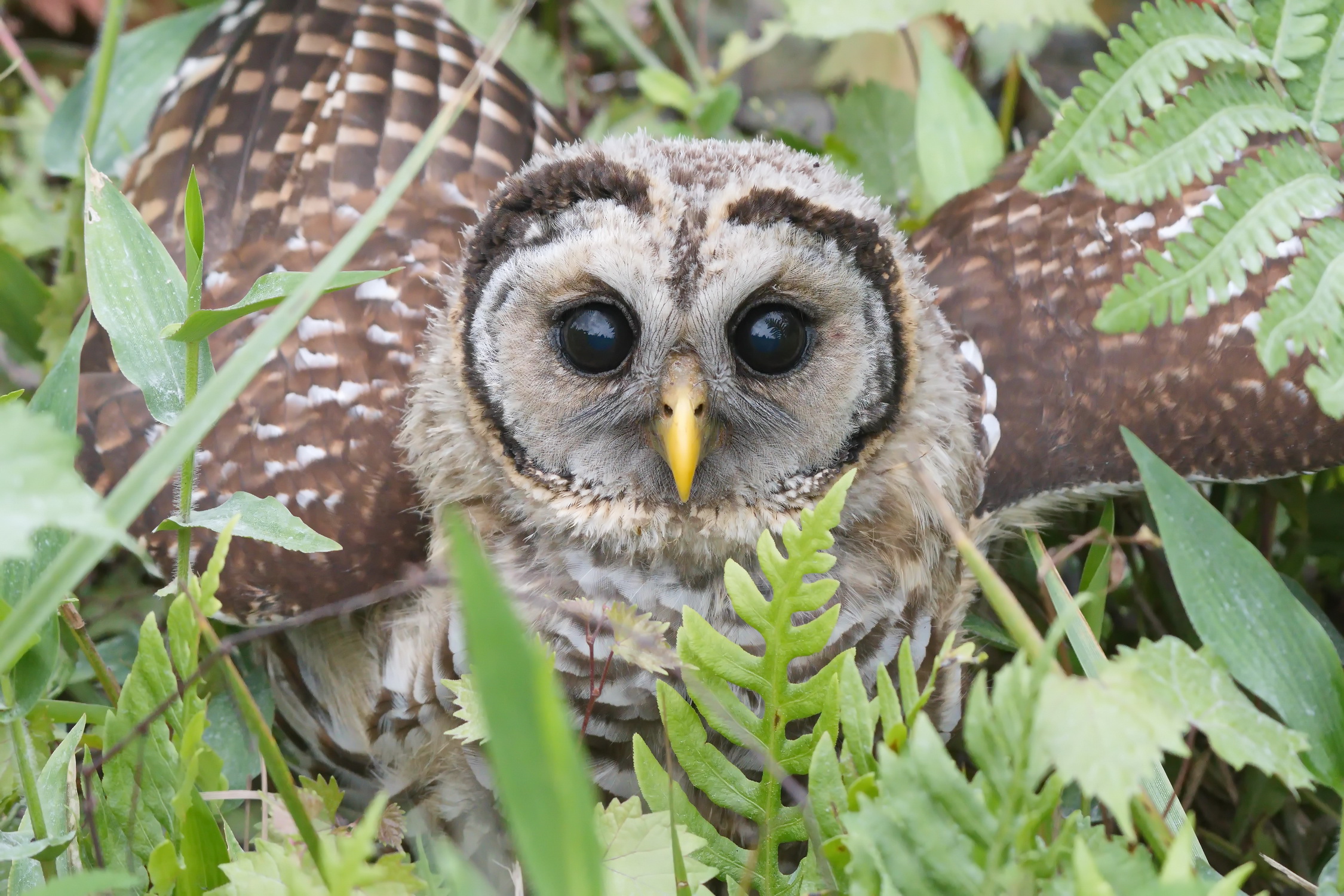
I soon learned there were at least two of them in the area. Young birds often don’t have enough life experience to know that they should be wary of humans, and these two paid me absolutely no mind at all. One nearly landed on my feet as it swooped down and struck a katydid! It appeared that katydids are like candy to baby barred owls. I saw them hunt frequently, and they came up with katydids every single time.
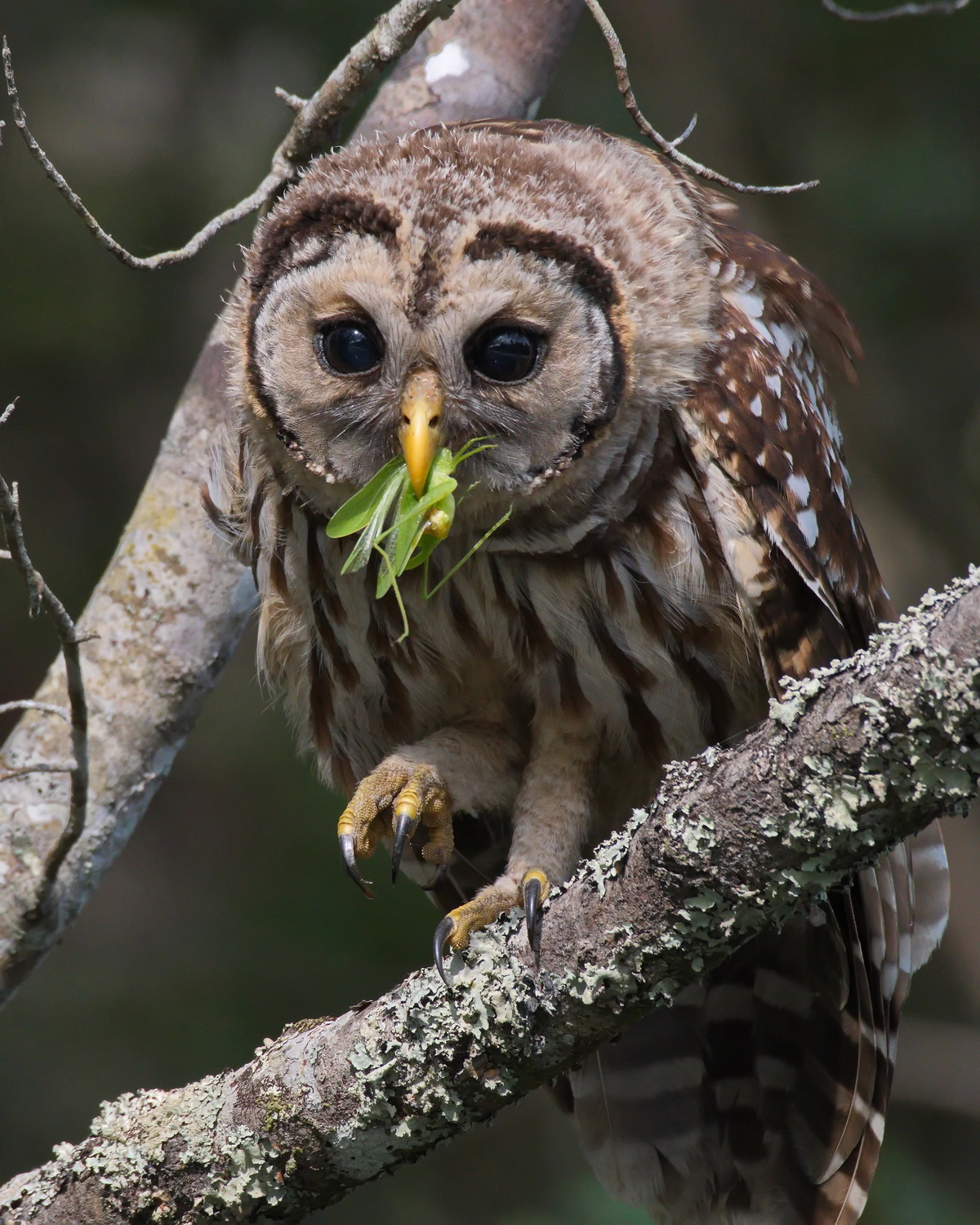
One of them did stalk an insect other than a katydid, following it diligently for ten minutes or so. It never struck, though, and it must have good instincts because I’m pretty sure that’s a velvet ant, otherwise known as a cow killer, and it can deliver an extraordinarily painful sting. Much better to stick with the defenseless katydids!
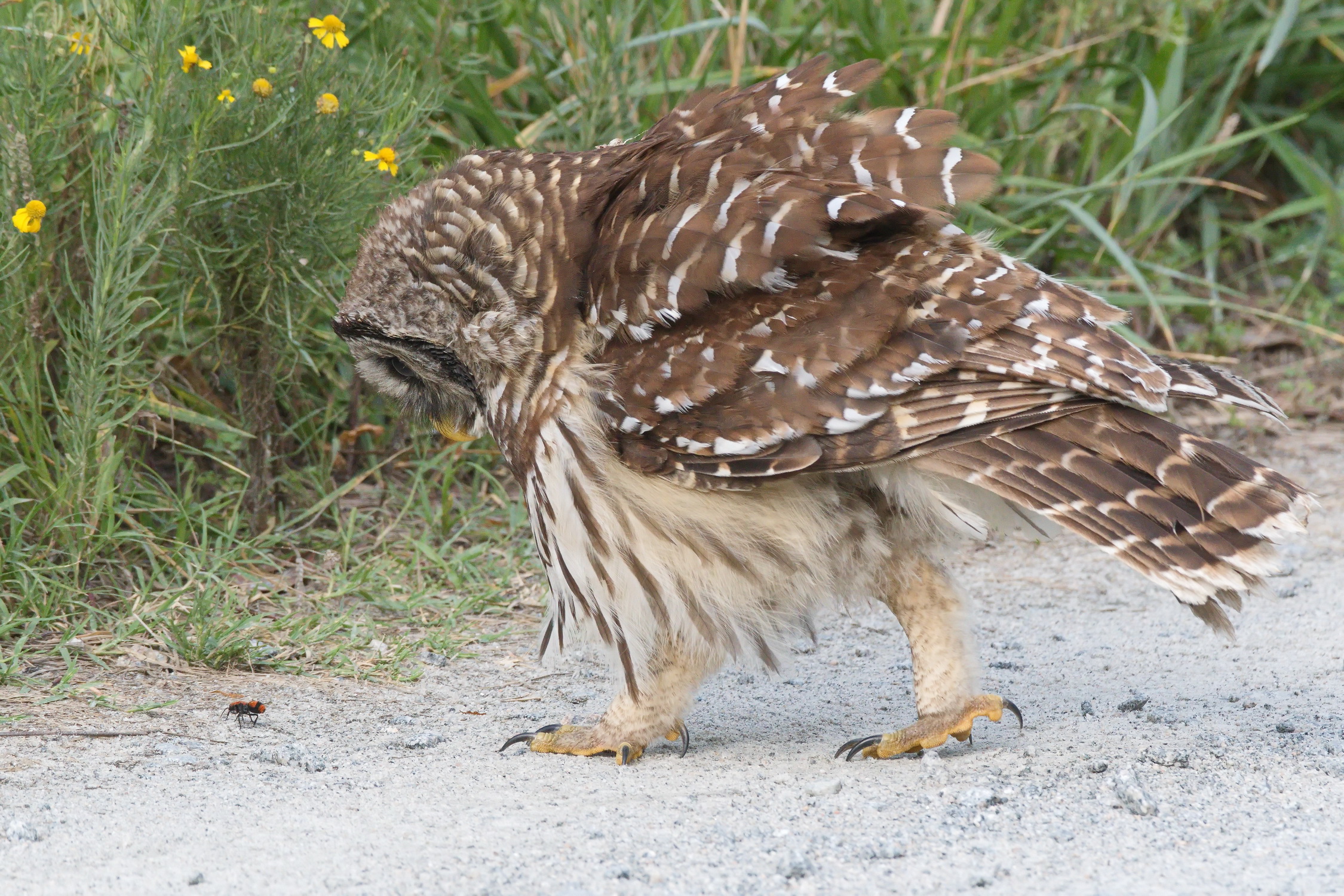
Barred owls, like pretty much all birds, are close to adult size by the time they leave the nest at 4 to 5 weeks. Unlike most other birds, barred owlets fledge before they can fly. I know that these owlets must have been at least 12 weeks old because they were fully flighted. I suspect they were more than 4 months old because barred owl parents continue to feed their babies for about 4 months, another unusual behavioral trait, and I never did see any adults. Still, these cuties were clearly identifiable as young ones by the fuzz on their heads and their skinny little not-fully-feathered legs.
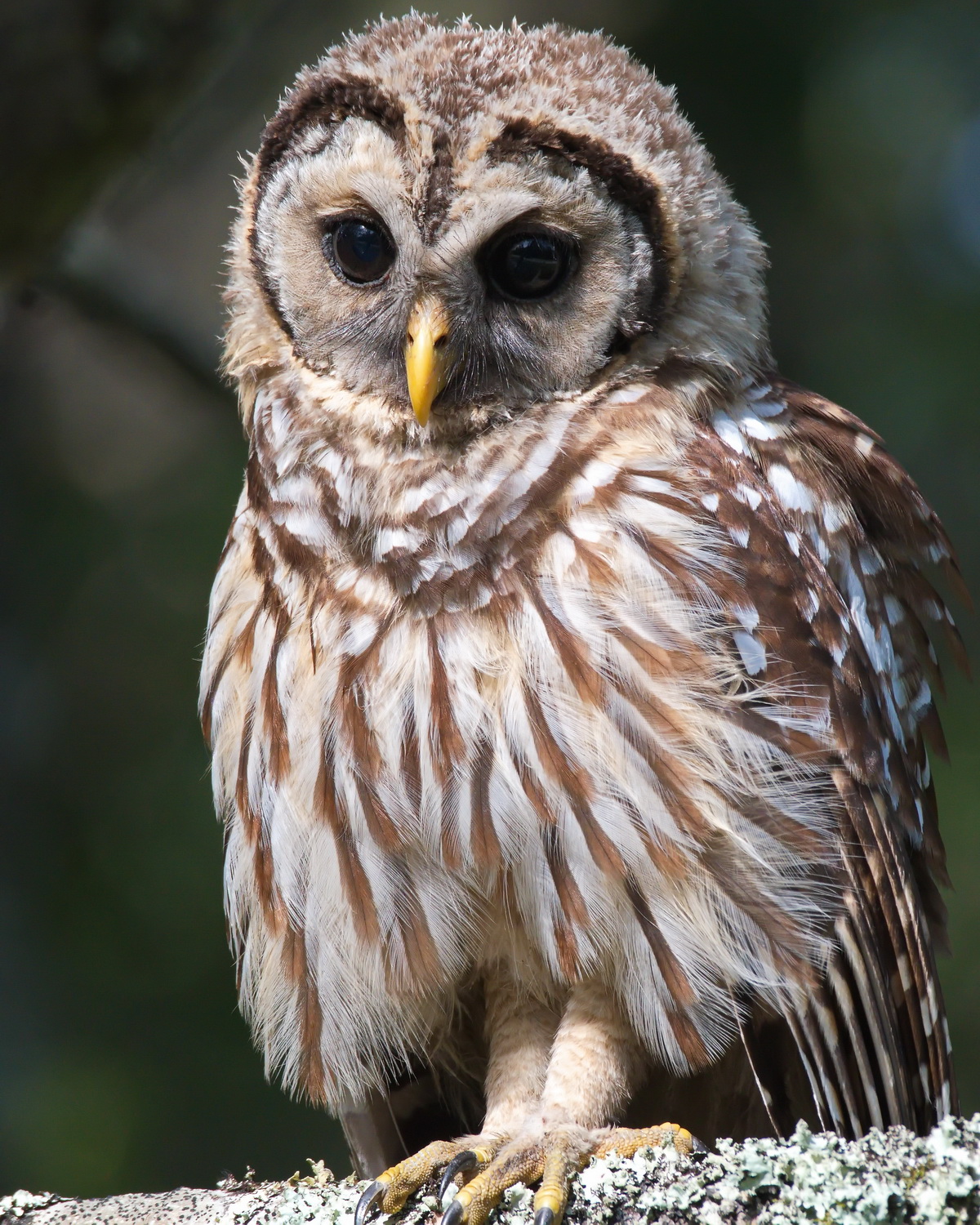
I saw the baby owls nearly every day that I visited the refuge. They were talkative little things. Again, as far as I know, they were only calling to one another. I never heard or saw an adult.
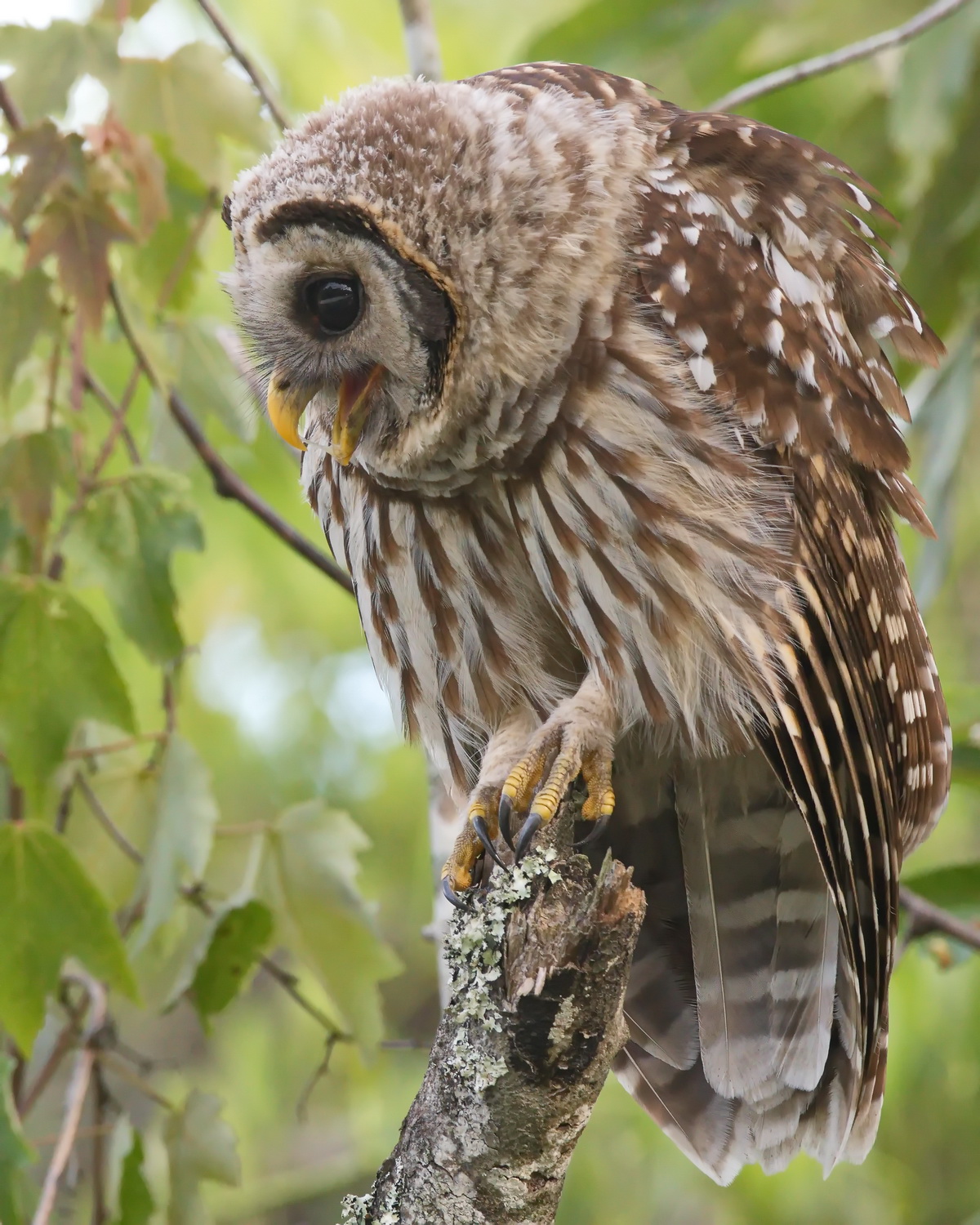
Even though they were as big as adults, they still had all the charm of babies, and I was enthralled with one of their most adorable features: THEY HAVE EYELASHES!! Adult barred owls have fully feathered eyelids, so they’ll lose the eyelashes effect eventually, but tell me that isn’t the cutest thing you’ve seen all day!
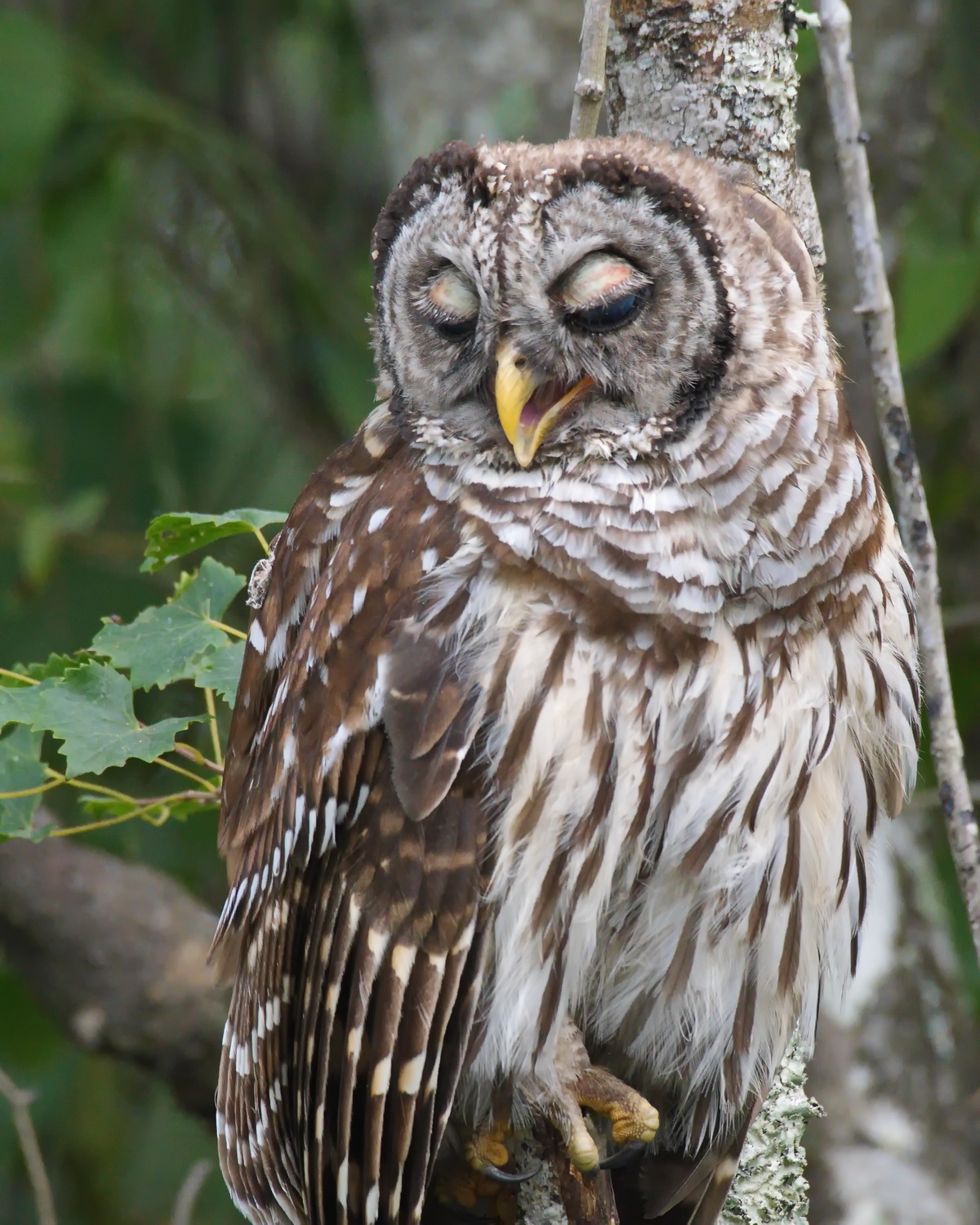
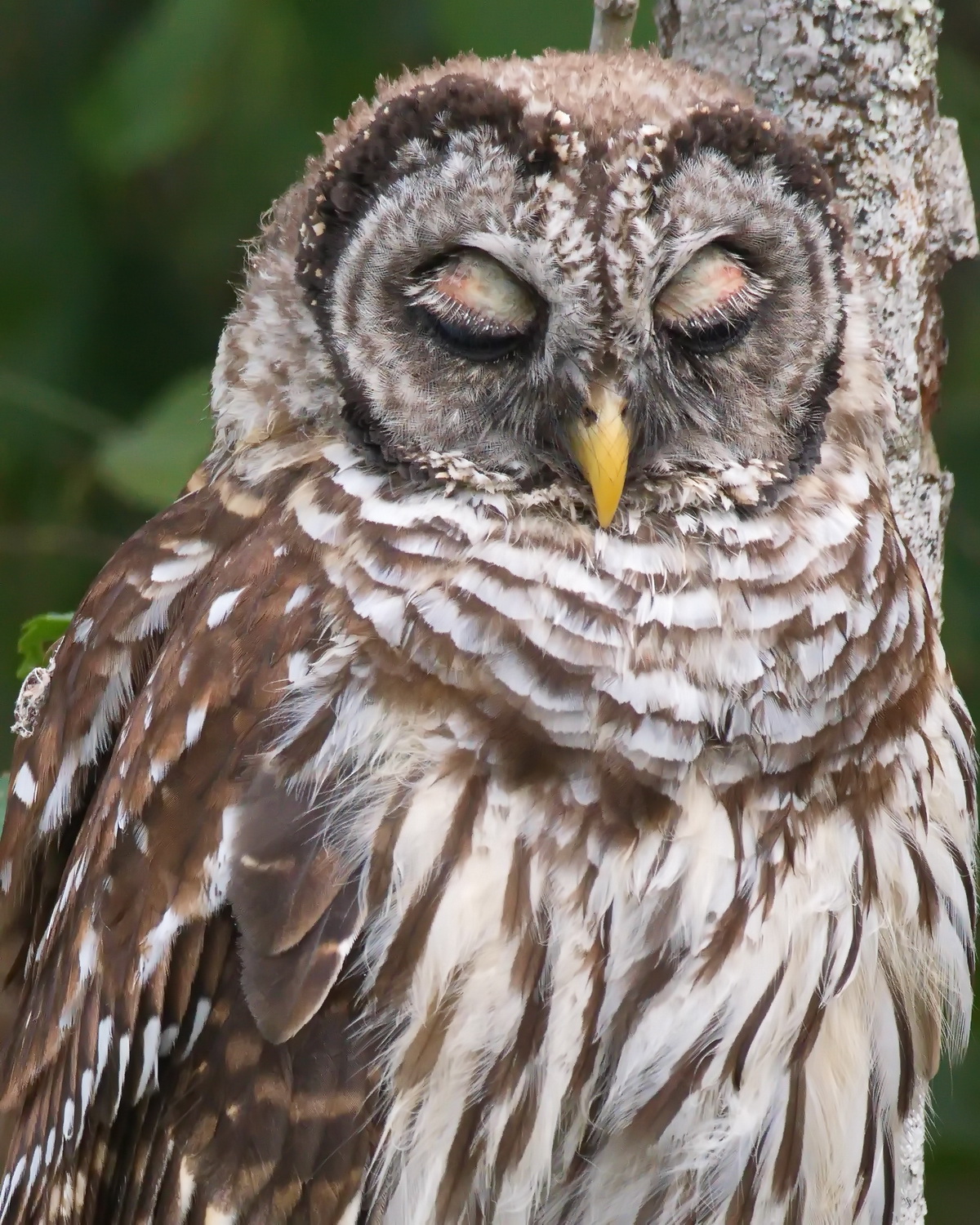
It was an honor and a privilege to spend time with these juvenile owls, and I only wish they lived near me so I could watch them grow up and make owlets of their own. Stay safe, little ones!!
